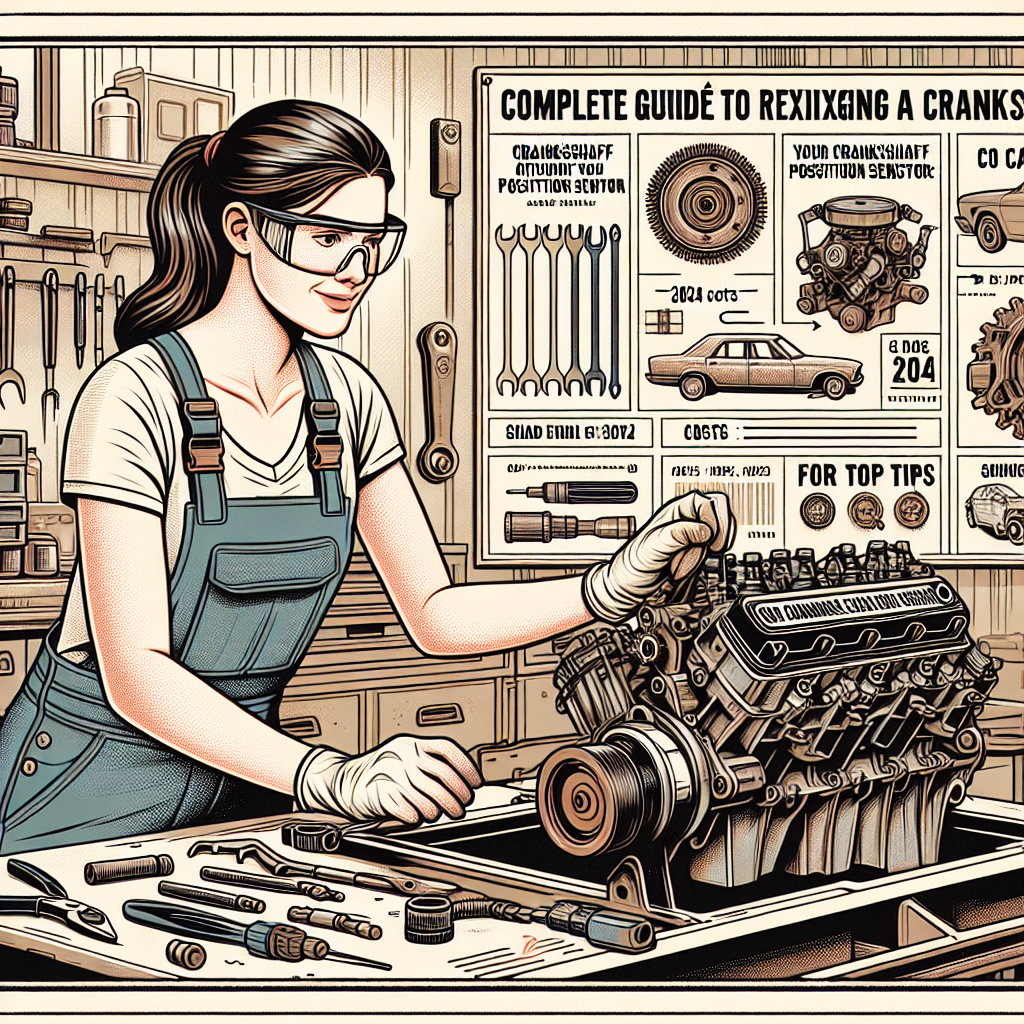
Introduction
In the heart of any engine lies a little sensor that plays a huge role: the crankshaft position sensor. This unassuming component is crucial for the synchronization of your engine’s operation. When it fails, the consequences can range from inconvenient to downright catastrophic. Fortunately, I’m here to provide you with a comprehensive guide to fixing your crankshaft position sensor, addressing everything from costs to tips specific to 2024.
Understanding the Crankshaft Position Sensor
Before diving into repairs, let’s understand what a crankshaft position sensor does. The sensor is responsible for monitoring the position and rotational speed of the crankshaft. This information is sent to the engine control unit (ECU), which adjusts fuel injection and ignition timing. A faulty sensor can lead to poor engine performance, starting issues, and even engine stalling.
Symptoms of a Failing Crankshaft Position Sensor
Recognizing the symptoms of a failing crankshaft position sensor is the first step in diagnosing the issue. Common symptoms include:
- Engine stalling or misfiring
- Difficulty starting the car
- Check Engine Light (CEL) illuminated
- Poor acceleration
- Intermittent stalling
Diagnosing the Issue
To diagnose a failing crankshaft position sensor, you need to perform a few tests. Here’s a step-by-step guide:
Using an OBD-II Scanner
- Plug the OBD-II scanner into the OBD port under the dashboard.
- Turn on the ignition but don’t start the car.
- Read the error codes. Common codes for a bad crankshaft sensor include P0335, P0336, and P0337.
Visual Inspection
- Locate the crankshaft sensor by referring to your vehicle’s manual.
- Inspect the sensor and its wiring for any visible damage or corrosion.
Multimeter Test
- Disconnect the sensor from its wiring harness.
- Set your multimeter to ‘Ohms’ and connect the probes to the sensor terminals.
- Compare the reading with the manufacturer’s specifications.
Cost of Replacing a Crankshaft Position Sensor in 2024
Factors Affecting Replacement Costs
The cost of replacing a crankshaft position sensor can vary due to several factors:
- Make and Model of the Vehicle
- Labor Costs in Your Area
- Quality of the Replacement Sensor
Cost Breakdown
| Component | Cost Range (USD) |
|---|---|
| Sensor | $50 – $200 |
| Labor (per hour) | $70 – $120 |
| Additional Costs | $30 – $60 |
| Total Estimated Cost | $150 – $380 |
Labor typically accounts for a significant portion of the replacement cost. If you are comfortable working on your car, you can save money by doing it yourself. Always refer to your vehicle’s repair manual for guidance.
Step-by-Step Guide to Replacing a Crankshaft Position Sensor
Tools Needed
- Socket set
- Ratchet
- Screwdrivers
- Multimeter
- Replacement crankshaft position sensor
Procedure
Disconnect the Battery
- To ensure safety, disconnect the negative terminal of the battery.
Locate the Sensor
- Refer to your car’s manual to find the exact location, usually near the bottom of the engine.
Disconnect the Wiring Harness
- Carefully remove the wiring harness connected to the sensor.
Remove the Sensor
- Use a socket and ratchet to unscrew the sensor from its position.
Install the New Sensor
- Screw in the new sensor and reconnect the wiring harness.
Reconnect the Battery
- Reconnect the negative terminal of the battery.
- Test the Installation
- Start the car to ensure it runs smoothly and that the Check Engine Light is off.
Tips for a Successful Replacement
Use an OEM Sensor
- Original Equipment Manufacturer (OEM) sensors ensure compatibility and reliability.
Keep the Area Clean
- Dirt and debris can interfere with the new sensor. Always work in a clean environment.
Follow Torque Specifications
- Over-tightening or under-tightening the sensor can cause damage. Refer to your vehicle’s specifications.
- Check for Moisture
- Moisture buildup in the sensor area can cause short circuits. Ensure the area is dry before installation.
Preventive Measures
Regular Maintenance
Regular maintenance can prolong the life of your crankshaft position sensor. Occasionally inspecting the wiring and ensuring there is no oil or coolant leakage can prevent many issues.
Keep Software Updated
Keeping your car’s ECU software updated can prevent sensor malfunctions. Manufacturers sometimes release updates that can improve sensor performance and longevity.
Use High-Quality Fuels and Oils
Using high-quality fuels and oils can reduce buildup and contamination that can interfere with sensor operation.
Common Mistakes to Avoid
Not Disconnecting the Battery
- Always disconnect the battery to avoid any electrical hazards.
Ignoring Error Codes
- Never ignore error codes. They indicate underlying issues that need immediate attention.
- Using Incorrect Tools
- Using incorrect tools can damage both the sensor and the engine components.
Conclusion
Fixing a crankshaft position sensor might seem like a daunting task, but with the right knowledge and tools, it is entirely manageable. From understanding the symptoms to diagnosing and replacing the sensor, this guide aims to equip you with the know-how to tackle the issue head-on.
For more information on maintaining your vehicle, you might find these articles useful:
Frequently Asked Questions
1. What are the signs of a failing crankshaft position sensor?
Signs include engine stalling, difficulty starting the car, poor acceleration, and an illuminated Check Engine Light (CEL).
2. Can I drive with a bad crankshaft position sensor?
It is not recommended to drive with a bad sensor as it can cause the engine to stall or misfire, posing a safety risk.
3. How often should the crankshaft position sensor be replaced?
While there is no fixed interval, it’s good practice to inspect it during regular maintenance and replace it if any symptoms of failure are noticed.
4. Is replacing a crankshaft position sensor a DIY job?
Yes, if you have basic mechanical skills and tools, you can replace it yourself. However, always refer to your vehicle’s repair manual for specific instructions.
By following this guide, you can save time and money by effectively diagnosing and fixing crankshaft position sensor issues. Happy driving!